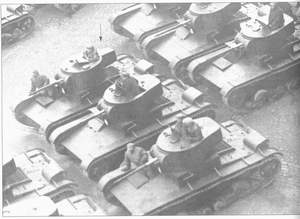 |
T-26 first series of the tank on parade in 1933. One tank is equipped with an earlier version turret (with smaller rear section and single hatch.[1]
|
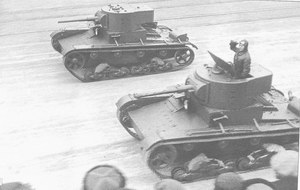 |
T-26M34 tanks on parade. Probably Khabarovsk, Nov. 7 1935. [1]
|
![Photo: T-26M35 tank equipped with radio station at Kiev's manoeuvres, 1935 [1]](2/T_26M35RT_1cut.jpg) |
T-26M35 tank equipped with radio transmitter during the Kiev manoeuvres in 1935 [1]
|
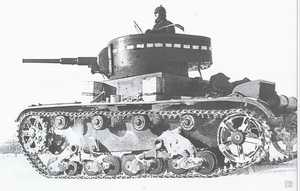 |
T-26 year 1936 production series at the manoeuvres of Moscow Military District. The tank has welded hull and punched gun mask. [1] |
![The general view of T-26M35 tank (produced in 1936) equipped with radio station with welded hull and turret. [1]](2/T_26M35RT_3a_cut.jpg) ![The general view of T-26M35 tank (produced in 1936) equipped with radio station with welded hull and turret. [1]](2/T_26M35RT_3b_cut.jpg) ![The general view of T-26M35 tank (produced in 1936) equipped with radio station with welded hull and turret. [1]](2/T_26M35RT_3c_cut.jpg) ![The general view of T-26M35 tank (produced in 1936) equipped with radio station with welded hull and turret. [1]](2/T_26M35RT_3d_cut.jpg) |
The general view of T-26M35 tank (produced in 1936) equipped with radio transmitter and welded hull & turret. [1]
|
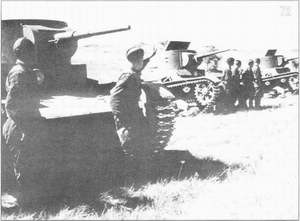 |
T-26 model 1933 light tanks of the Separate Tank Battalion/36th Motorised Rifle Division. The Khalkhin-gol (Nomonhan) region, late July 1939.[6] |
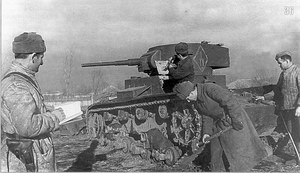 |
Repair to a T-26 (1933 series) assigned to 24th Separate Tank Regiment. The Crimean Front, April 1942.[3] |
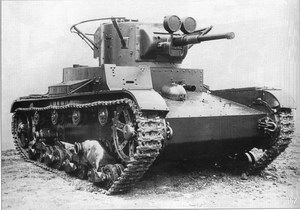 |
T-26 tank (1933 version with cylindrical turret) was the most universally used tank in the Red Army before the war. The unit in the photo shows a unit equipped with radio transmitter, handrail style antenna and search lights for night firing.[4] |
 |
T-26 assigned to the 35th Light Tank Brigade moving into an attack line, Feb., 1940[5] |
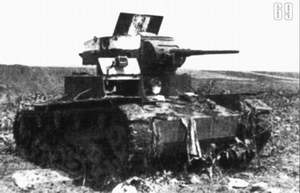 |
Knocked down T-26 (photo 69). A white stripe is marked on the perimeter of the upper part of the turret. A gap in the stripe enables one to see number "6". Most probably these digits are not tactical numbers, but an element code. Southern Front, Uman area, the 39th Tank Division/16th Mechanised Corps, August 1941. [7] |
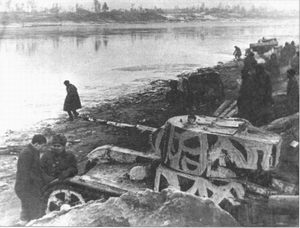 |
T-26 in winter camouflage. Nevskaya Dubrovka, Leningrad Front, 1942 [5] |
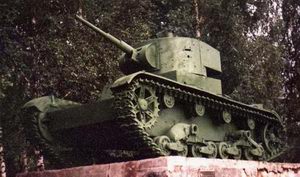 |
T-26M33 on display as a monument in Korovitino village (Novgorod region). Note the non-original tracks [5] |
 |
Finnish "modernization" of T-26: the turret from a line tank, mounted on the hull of OT-26 on the right. Karelia, 1943 [1] |